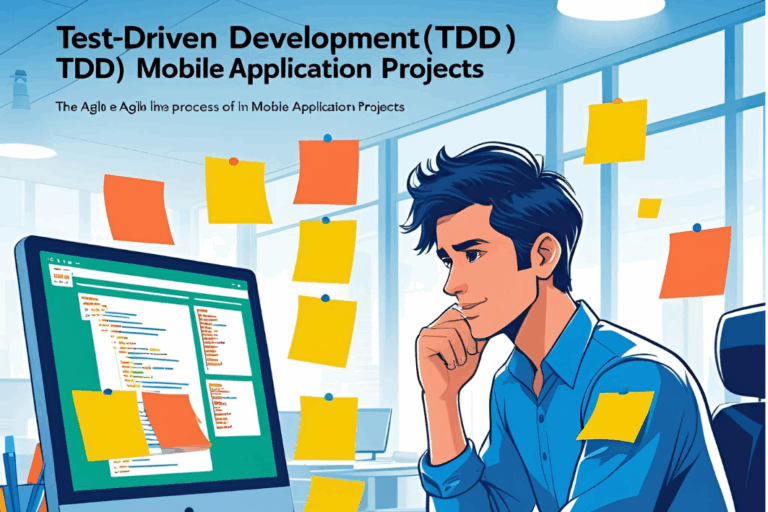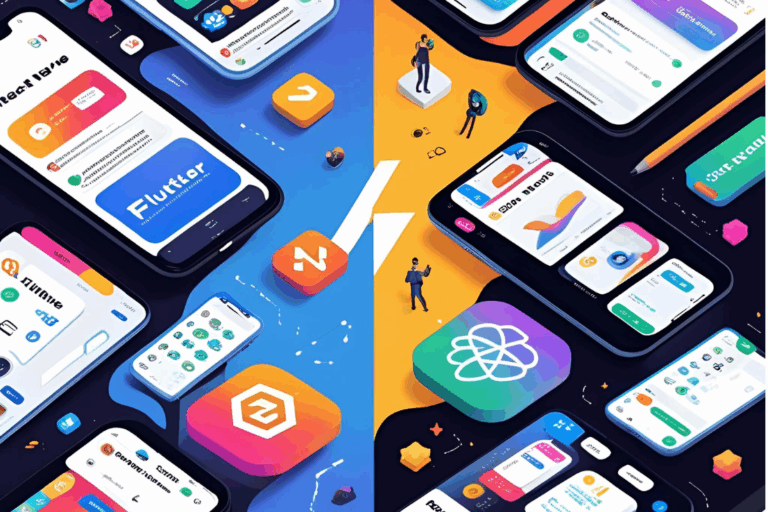Mobile App Tech Stack: How to Choose the Right One in 2025
As the mobile landscape evolves, so do user expectations. Instant loading times, offline functionality, rich interfaces, and seamless integration across devices are now baseline requirements. Your tech stack must support rapid mobile app development, robust backend services, and ongoing adaptability. It’s no longer just about building an app—it’s about launching a product that can grow with your users.
Performance bottlenecks, reduced flexibility, and increased development expenses might result from a bad tech stack selection. However, using the appropriate tech stack for your mobile app guarantees market alignment, efficiency, and agility.
Frontend: Who Will Win in 2025 Between Flutter and React Native?
The argument goes on, but context is crucial. In 2025, Flutter and React Native will both be the most popular cross-platform development tools, but they have significantly different functions.
- Flutter: Provides enhanced development tools, better cross-platform UI consistency, and quicker rendering thanks to its Skia engine. Perfect for programs that require a lot of visual modification.
- React Native: Still popular among companies with teams already using JavaScript. It boasts a large library ecosystem, seamless web-to-app migrations, and Meta support.
When your project requires pixel-perfect design, Techo Lab suggests Flutter; when speed-to-market and team familiarity are important considerations, we suggest React Native.
Infrastructure and Backend: Prioritize scalability.
No mobile application exists in a vacuum. Just as important as the frontend is the backend stack you choose. Important backend choices consist of:
- Django or Node.js: For programs that require a lot of data or for real-time activities.
- Supabase or Firebase: Perfect for real-time updates and MVPs.
Better cost control and auto-scaling are made possible by serverless architecture, which eliminates the headache of server maintenance.
Growth is supported with the appropriate backend. A subpar backend? The weight of achievement causes it to crumble.

Comparing Native and Cross-Platform: It’s Not a Binary
Cross-platform vs. native is no longer a binary choice in 2025. Native programming, such as Kotlin/Swift, continues to be advantageous for mission-critical products like health monitoring or mobile banking. Cross-platform solutions, however, provide the ideal mix of speed, cost, and performance for the majority of B2C applications.
It’s important to comprehend the essence of your product:
- Is delivery speed crucial?
- Are you aiming for iOS and Android right away?
- Will native APIs or offline support be essential?
Make the choice based on the objectives of your app.
Future-Proofing Using New Technologies
AI-driven user experience, real-time collaboration tools, compatibility for AR and VR, and edge computing for quicker offline performance are some of the latest developments in mobile. Your IT stack should be adaptable enough to embrace 2025 app trends without requiring complete redesigns, in addition to meeting today’s demands.
By selecting frameworks that change as your app does, modular stacks, and decomposable APIs, Techo Lab remains ahead of the curve.
Concluding remarks
It’s not about following trends when it comes to selecting the best tech stack for your mobile app in 2025. It involves matching your development strategy to your company objectives, future scalability requirements, and product vision. Your mobile app will lead rather than just launch with the correct direction.
We do more than just create apps at Techo Lab. We design scalable digital foundations.
Would you like advice on your upcoming mobile project?
Let us assist you in selecting the tech stack that is ideal from the start.





